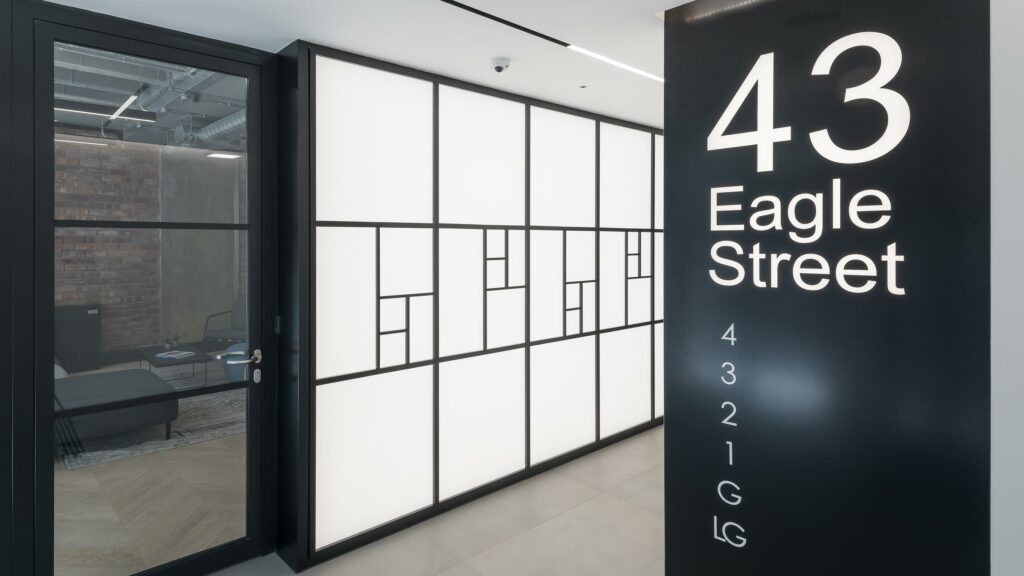Discussion around the concept of closer alignment between the FM and commercial real estate sectors has continued for some time, emphasising the potential benefits available for both sides.
While many have regarded this as something they would like to see, but in reality have found difficult to deliver, the example of the partnership between Legal and General Investment Management (LGIM) and Bellrock FM provides an award-winning example of how this can be successfully implemented and managed.
FM Director spoke exclusively to LGIM head of property operations Mark Tyson and Bellrock Group managing director Mike Smart to gain insight into the dramatic transformation of the client to become a commercial property owner of choice. Working in partnership with Bellrock, it has established a delivery model with its service partners that focuses on four key aims of improving the occupier experience, enhancing occupier health and wellbeing, increasing the social value of assets and boosting the portfolio’s overall sustainability.
One of the first objectives was to change the traditional role of the managing agent in order to achieve the objectives outlined above. Mr Tyson explains: “Under the managing agent model, it’s often the managing agent who is seen as the owner of the building, which doesn’t help promote the brand of the asset holder as an owner of choice.
“At the same time, if a managing agent is running assets worth tens of millions of pounds, decisions may have to go through layers of management before someone at site level is given the go ahead to carry out improvements. This takes time and can adversely affect the occupier’s experience.”
Considerations for change can frequently be seen to have been deterred due to the size of the task and the operation concerned, but this was not the case for LGIM. Its portfolio of approximately 700 properties includes 140 facilities managed in partnership with Bellrock, including 32 multi-let offices with more than 1,000 leaseholders and an annual spend in excess of £30m on managed supply chain services.
Project Mercury was created by Mr Tyson and his team to identify and implement the model that would see FMs and property managers become equal partners. “We’ve seen how FM teams have been underfunded and overlooked in the past, but the aim of Project Mercury was to raise the profile of the FM model and allow it to have an equal say in how things are run throughout the portfolio.”
These efforts led to the creation of the FM Integrator (FMI) model and the official appointment of Bellrock to work alongside managing agents across all areas and manage the LGIM supply chain. This was the first highly effective step in the change process, with Bellrock working as an equal partner to provide data-driven solutions and work towards improving the occupier experience.
“We’ve worked increasingly closely with Mark and LGIM to align Bellrock from both cultural and operational perspectives,” says Mr Smart. “As part of this the partnership has seen compliancy levels rise to between 94% and 97% and some excellent NPS scores, all of which are shared with everyone and show the power of the data-driven model.”
Bellrock’s management of its client’s supply chain has been fully supported by all managing agents, with the results being enjoyed by all stakeholders. One of the most notable of these has been improved payment times for service providers.
“The managing agents bought into the new way of doing this,” Mr Tyson continues. “Now our average payments are on average around 10 days for our portfolio and suppliers love it, giving us better leverage in the market over time.”

Support for the Mercury Model has been assisted by the staging of workshops around the LGIM estate with building, fund and management teams to explain the concept and the reasons for creating a one team culture between the company and its service providers. Identities were also created for each of the 140 buildings in the estate to help align the teams.
The new model was implemented in stages within an eight-month period and now operates across funds with an approximate value of £10bn. The focus on improving the occupier experience has additionally incorporated energy management and raised levels of social value throughout the estate.
“Another part of our efforts is that we aim to be the best client for all our service partners,” says Mr Tyson. “This has seen our supply chain increase from 68 to 200 to ensure we have the right contractors working in every building.”
These efforts have been combined with the creation of a reward scheme to recognise the individuals who provide examples of excellence. Annual workshops and roadshows are held to ensure everyone is working at the correct level and in the right direction, including time for networking to ensure all team members are connected and focused on improving levels of partnership working.
Increasing levels of interaction with leaseholders has allowed the partners to ask their opinion on their workplaces and thoughts on how these can be improved. Mr Tyson states that this has resulted in both positive and negative feedback, but higher levels of trust have resulted from the prompt actions taken by the partners.
“We ask our occupier representatives to score their buildings as a place to work out of five, and we are now seeing assets consistently scoring four and five across the board,” says Mr Tyson.
Considerable improvements in net promoter scores (NPS) are also proving the effectiveness of the Mercury Model, with several facilities moving from a minus score to well into the positive side. The most notable of these have included those starting from a score of more than -48 to nearly +60, with others recording notable rises and further proving the effectiveness of the adopting new models.
Mr Tyson states that one of the company’s balanced funds that includes more than 70 properties has seen reletting rates increase in a 12-month period. While this aspect will continue to deliver long-term gains for the business, it should be further appreciated that the efforts of the partners have resulted in savings that will make considerable additional contributions.
An example of this is the result from energy saving efforts across its portfolio of 140 assets in 2021, which reduced consumption by more than 3.5m KWh, exceeding its target by 69%. These results are continuing and will be further enhanced following the rise in energy prices.

“This model helps FM to move out of the basement and work on a much more equal basis with property managers,” Mr Tyson continues. “The traditional model was focused too much on cost and it’s much better for everyone if we can focus on return on investment, quality and retention of occupiers.”
Mr Smart agrees that the Mercury Model has proved to be highly beneficial and explains that the level of effort involved is entirely worthwhile. “We had several workshop sessions with a third party consultancy and everyone in the supply chain and have encouraged them to take ownership of the relationship with each other and LGIM,” he says. “The model works best when everyone is accountable.”
They are both additionally keen to explain that it is essential for honesty and openness in the sharing of all information. “You still need to have some difficult conversations if something isn’t right and it’s not all plain sailing,” Mr Tyson continues.
“But these are entirely worthwhile to get the right culture established and to do that all conversations and actions have be based on honesty and open analysis of the facts. That means there’s no massaging of the figures to make them look better than they are and we also incentivise everyone to be honest and get things fixed as soon as possible when they go wrong,” he says.
Another indication of the dynamic nature of the improved culture within LGIM and its service provider partners is the launch of Project Symphony. This places the Bellrock Concerto system at its core, with the intention of further improving on the considerable benefits already seen.
It includes the fitting of more sensors around each facility to monitor aspects such as indoor air quality, in addition to temperature and the condition of plant and equipment, with the intention of improving the effectiveness of communications with leaseholders. This method is also proving highly effective in rectifying issues before occupiers have noticed them and further supporting the levels of trust that continue to grow between all stakeholders.
“We’ve succeeded in making the FM relationship far less passive and we now have to make every effort to add more value,” Mr Tyson continues. “This will only be possible if we do all the basics while also ensuring that we continue to focus on the right values and culture.”
While the figures show that retention of customers has increased as a result of embedding the Mercury Model, combined with improving savings delivered by sustainability and energy management efforts, another positive outcome continues to be enjoyed. Staff attrition rates have fallen by a notable amount, as more people have expressed higher levels of job satisfaction, and this will reduce the cost and disruption of recruiting new team members.
One of the contributing factors within this is the Hidden Workers Report, commissioned in May of last year by Legal & General, that addresses numerous aspects of inequality within the business environment. It highlights the benefits of improved access to sick pay, healthcare and death in service benefits, along with many other aspects.
Representatives from members of the company and its supply chain are being invited to join steering groups and engage with workshops to ensure that a standardised approach is adopted and applies to all partners. All the above will be further enhanced through the higher levels of engagement in all areas.

“There’s a lot of power in the FM industry and that’s being realised through the efforts of everyone at LGIM, Bellrock and our supply chain partners. This is increasingly including appreciation of the hopes and dreams of staff members and allowing them to achieve their potential and ambitions,” says Mr Tyson.
His views are again supported by Mr Smart, further emphasising the close working relationship between LGIM and Bellrock: “It’s really rewarding to see all these achievements and outcomes being realised and shows that our industry can continue to increase the way it benefits all of UK society,” he says.
Having implemented the Mercury Model throughout a large estate and included all members of the extensive LGIM supply chain, from the largest to the smallest, there is no doubt that this can be replicated in all areas of FM and real estate. Not only has it addressed a large proportion of the negative issues seen for many years – including placing cost as the most important factor in tendering exercises – but has additionally delivered a high percentage of the desired outcomes such as achieving savings while raising the levels of customer support and loyalty.





